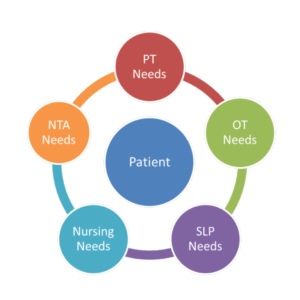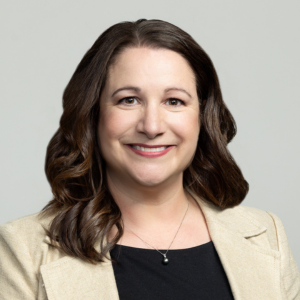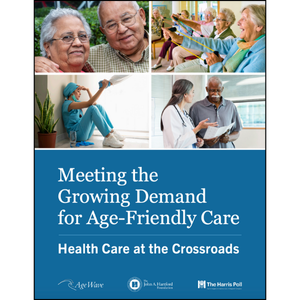What MDS 3.0 gets right
Those of us who work with the MDS 3.0 on a daily basis often feel as though we have been in continuous motion, striving to keep abreast of the constant tool changes since it was launched on October 1, 2010. Nurse assessment coordinators who are tasked with completing the MDS 3.0 reported in a recent survey put out by the American Association of Nurse Assessment Coordination (AANAC) that the new MDS is more time consuming and onerous than the previous version. They report lower job satisfaction and general frustration managing and administrating the new tool. Additionally, constant changes to the 3.0 tool have made it difficult to keep up with the new rules and ensure accuracy in completing the document.
So, what did the Centers for Medicare & Medicaid Services (CMS) get right with MDS 3.0? Respectfully, and without the intent to understate some of the obvious problems encountered with the new MDS version, I believe they got some very important things right.
Many nurse assessment coordinators voiced concern about the focus on resident interviews that the MDS 3.0 includes, especially Section Q, which requires that residents be given the opportunity to assess the option of receiving care in the community as opposed to a residential facility. There were also concerns that the time commitment involved in interviewing the residents to assess personal preferences and depression would prove to be overwhelming. Additionally, the rule is specific that the only reason an interview would not be attempted would be if assessment reveals that the resident is rarely or never understood.
It is true that according to the AANAC member survey, the interviews do increase the time commitment for completing the MDS 3.0 as compared to the MDS 2.0. However, as healthcare providers, we know that talking to the resident is a wonderful way to obtain information on that resident’s status, even if that resident suffers from dementia. Jennifer Pettis, RN, WCC, RAC-MT, director of program development at Harmony Healthcare International in Topsfield, Mass., and an AANAC master teacher, was recently interviewed for an article that was published in the association’s bi-weekly newsletter. “The interviews are helping staff find out things about their residents that they never knew before … and when done correctly, they are leading to assessments and care plans that are much more resident centered,” Pettis said. The added requirement is designed to improve care, and feedback from nurse assessment coordinators suggests that providers are learning quite a lot about their residents.
It remains an issue, however, that nurse assessment coordinators continue to feel overwhelmed by the process of completing the interviews. As Pettis suggested, “It’s human nature to let bad experiences drown out the good ones. Step back and look at the positive experiences where you learned something about residents that you didn’t know. For example, maybe you thought a resident never had pain and you learned through the interview process that they had an ache in their hip … Giving the residents the opportunity to make how they feel known is important to them as patients and us as clinicians.” The interviews are intended to provide the interdisciplinary team (IDT) with relevant information about each resident so the care plan can focus on the real needs of the resident, as opposed to the IDT’s perceived needs.
The MDS 3.0 also provides a stronger structure for assessing skin integrity. The new Section M has caused some consternation because of the rules regarding the presence of a pressure ulcer on admission and staging pressure ulcers. The skin of an elderly resident is fragile and breaks down easily. It is not unusual for a newly admitted resident to enter a skilled nursing facility with identifiable impending skin breakdown. If a pressure ulcer has begun under the skin, but has not yet broken through, the facility will stage the ulcer as a Stage I pressure ulcer. When that skin does break down—as often happens once the damage has been done under the skin—the facility is responsible for the new breakdown. This is frustrating to providers, because there is a sense that they are held responsible for damage that was done when that resident was not under their care. It is important to remember, however, that the regulations are set up to push harder for better skin care, and success in this area will not only improve care and outcomes, but also have an effect on survey.
The Quality Indicator Survey, which is currently being rolled out across the nation and will eventually replace the traditional nursing home survey, actually measures the incidence of pressure ulcers. Good documentation on skin status on admission as well as skin care regimens that are put in place to treat any potential skin breakdown will provide evidence of the work a facility is doing to prevent any skin damage.
“Consistent with clinical practice, we no longer back-stage pressure ulcers—and no longer stage ulcers other than pressure ulcers when recording them on the MDS … Successful care planning is all about identifying risk, putting a plan in place to eliminate or modify the risk factor identified and then continual evaluation if it is working and, if not, revising the approach,” Pettis stated in the interview. Essentially, the goal of the regulation is to keep each resident’s skin intact and healthy.
A third improvement that the MDS 3.0 offers over the past instrument is the Care Area Assessments (CAAs), which replaced the Resident Assessment Protocols (RAPs). The tools do not vastly differ from each other; however, the CAAs are designed to provide both guidelines and tools for a more effective assessment, as opposed to the provision of mere guidelines, which is what the RAPs offered. This is an area that, as Pettis suggested, offers better tools for the entire IDT to utilize. “These worksheets are outstanding tools that the team can use to enhance resident assessment and, by doing so, enhance quality of care and life for the resident, as well as survey compliance,” Pettis said.
It is important to note that CMS does not require that you use the tools they provide with the CAAs, just as the required care plans do not have to be in any particular format. This is a case where CMS allows facilities to use a format that works best for them, as long as the basic requirements of each section are met.
It has been said that the only thing constant in this world is change. This aphorism sums up the processes of CMS in managing the MDS 3.0—almost since the day it launched. Some days it feels like we are running on a perpetually fast treadmill. The new rules just keep coming. As we move through this process, it is important to keep in mind that the intent of these constant modifications is to improve resident care. After all, it has also been said that, “There is nothing wrong with change, if it is in the right direction.” (Winston Churchill)
Improving resident care will always be the right direction.
Ingrid Johnson Serio, RN, BSN, MPP, RAC-CT, C-NE, is the Director of Content Management for AANAC. She can be reached at iserio@aanac.org.

I Advance Senior Care is the industry-leading source for practical, in-depth, business-building, and resident care information for owners, executives, administrators, and directors of nursing at assisted living communities, skilled nursing facilities, post-acute facilities, and continuing care retirement communities. The I Advance Senior Care editorial team and industry experts provide market analysis, strategic direction, policy commentary, clinical best-practices, business management, and technology breakthroughs.
I Advance Senior Care is part of the Institute for the Advancement of Senior Care and published by Plain-English Health Care.
Related Articles
Topics: Articles , MDS/RAI , Medicare/Medicaid











